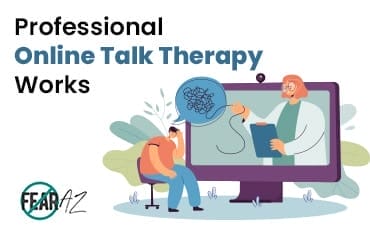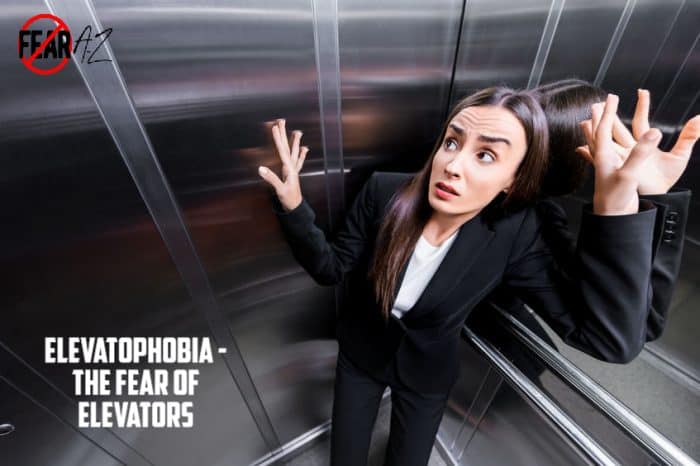Share This Article
The Fear of Trains Is Known as Siderodromophobia
What is the longest passenger train in the world? This honor falls to the Gahn, an Australian tourist train with an astonishing length of more than 2,500 feet. That’s equivalent to twelve football fields. For people with siderodromophobia, this bit of trivia might be disturbing.
Are you deathly afraid of trains, a popular mode of transportation? Perhaps you have nightmares of being in a train crash. If given a choice, you’d rather walk for miles than get on the subway.
If this sounds like you, you may have siderodromophobia. The good news is you can successfully manage your fear of trains phobia or even overcome it.

What Is Siderodromophobia?
What is the fear of trains called? Siderodromophobia is the intense fear of trains or railways.
Are you curious about siderodromophobia etymology? This term comes from these Greek terms:
- Sideros meaning “iron”
- Dromos meaning “run”
- Phobos meaning “fear”
Those with siderodromophobia are scared of railroads, subways, elevated trains, and monorails. As a result, they are unable to travel using these modes of transportation. In severe cases, they cannot approach, talk, or see images about them. They may even react negatively upon seeing a toy train.
Siderodromophobia is often associated with other phobias:
- Claustrophobia or the fear of closed enclosed spaces
- Social phobia or the fear of people or social situations
- Germaphobia or the fear of germs
Someone with this phobia may also be afraid of traveling in cars, driving at night, flying, sailing, and so on.
What Causes Siderodromophobia?
Siderodromophobia causes are similar to that of other specific phobias. They can be external events, personality traits, genetics, or media coverage.
Traumatic Experiences
As with other phobias, your fear of trains can be a result of negative past experience, such as a loved one’s death due to a train accident or witnessing a train accident. Events such as these can trigger an intense aversion to trains.
Media Coverage
At times, the phobia doesn’t need a personal trigger event. Media coverage of certain accidents can cause an aversion to trains. Watching an accident clip on TV can stay with you and cause a phobia to develop.
Genetics
Heredity can also be a reason for someone to develop a phobia of trains. Do you have a family history of mental disorders like anxiety disorders or specific phobias? When combined with a trigger event, this increases your chances of developing siderodromophobia.
Popular Culture
Scary stories and urban legends may at time involve those who have been accidentally run over by speeding trains. Others have committed suicide by throwing themselves on railway tracks. No wonder people are scared of these trains.
What Are the Symptoms of Siderodromophobia?
Siderodromophobia affects individuals differently. One person may be afraid of derailment while another might be afraid of crashing.
The following are some behaviors that might point to siderodromophobia:
- If you fear derailments and railway accidents
- If you fear unknown conductors or other railway employees
- If you fear a lack of control
- If you avoid commuting by train
- If you avoid going to a train station
- If you avoid watching TV shows or movies with trains
- If you cannot go to railway museums or historic sites containing railway tracks
Sufferers may even experience panic attacks. Others either freeze or flee the situation if they come across trains. If the only way to reach a place is to commute by train, some may avoid going altogether. Here are more train phobia symptoms:
Physical Symptoms
- Increased heart rate
- Cold sweat
- Digestion problems
- Shaking
- Breathlessness
- Dry mouth
- Numbness
- Crying/screaming
- Migraine
- Butterflies in the stomach
- Hot or cold flashes
- Muscle tension
- Nausea
- Dizziness
Mental/Emotional Symptoms
- Withdrawal
- Inability to manage anxiety
- Fearing an impending doom
- Fear of taking a train
- Difficulty concentrating
- Anger or mood swings
- Extreme anxiety
There is also anticipatory anxiety, which is the anxiety felt before a scheduled trip. One may start fretting about the journey even before boarding a train. It’s quite common and can be worse than the fear felt during the journey. If left untreated, siderodromophobia can worsen and interfere with one’s life. At the mere whistle of a train, someone with this phobia may start trembling and panicking. It reaches a point where they cannot bear even the thought of commuting on a train.
Self-Help Guide to Siderodromophobia
The treatments that work on most phobias also work on siderodromophobia. You can either take up anxiety-reducing initiatives at home or seek professional help. If your phobia is mild, you might consider these self-help methods.
Practice Yoga
Yoga aims to join the mind and body. It is a popular method to release stress since it makes you aware of your body and breath. According to a study, yoga can enhance mood and may be as effective as drugs in treating anxiety and depression.
Exercise
Strange but true: physical activity can relieve stress. When you put your body under pressure, it learns to cope with it. When there is an actual threat, the coping learned during exercise will help you a great deal. Exercises like cardio and swimming reduce stress hormones. The best part: these exercises also prompt the body to release happy hormones.
Meditate
Meditation anchors your mind to a focal point. You learn to focus on all your senses rather than on your panicky feelings. Meditation helps you achieve mindfulness. This practice lets you anchor your mind to the present moment. It combats any negative thinking or emotions.
Write It Down
Keep a journal. Writing what you are stressed about can relieve stress. By listing things you are grateful for, you focus your thoughts on the positive aspects of your life.
Reduce Caffeine
High amounts of caffeine affect your health. Aside from hyperacidity, coffee can worsen your anxiety. Cutting down on coffee will help you manage your phobia symptoms better.
Professional Help to Treat Siderodromophobia
If you’re unable to contain your anxiety through self-help techniques, professional guidance will help you dig deeper into the problem. Cognitive behavioral therapy (CBT) is a common technique used for siderodromophobia. With this therapy, you learn to:
- Change your thoughts and responses from the negative to the positive
- Stop and redirect your negative thoughts about trains
- Change your behavior towards trains
Beyond CBT, other psychotherapies and medical treatments can also be used to ease siderodromophobia.
- Exposure therapy
- Dialectical behavior therapy
- Talking therapy
- Mindfulness-based stress reduction
- Neuro-linguistic programming (NLP)
- Eye movement desensitization and reprocessing
- Hypnosis
How to Cope with Siderodromophobia
Coping with your phobia becomes a necessity when it starts to affect your personal, social, and professional life. If a train is the only means of transport where you live, you will end up wasting time searching for alternatives. That’s just one side of the story. Eventually, the phobia can adversely affect your career as you may find it difficult to commute to the office.
Following are some methods that can help you through your anxiety:
- Start by spending time at a railway station
- Breathe purposefully and deeply, focus on it
- Visualize happy thoughts or a happy place
- Start listing things to divert attention
- Chewing gum is also an easy way to relieve stress
Conclusion
Is it possible to have a productive life when you have this phobia? Yes, if you’re willing to put in the time and effort for siderodromophobia treatment. It can be treated no matter what caused it. Only you can train your mind to cope with this phobia of trains. Take simple steps to reduce the pressure and give yourself time to adjust. Soon, you’ll confidently ride the train even during rush hour.




